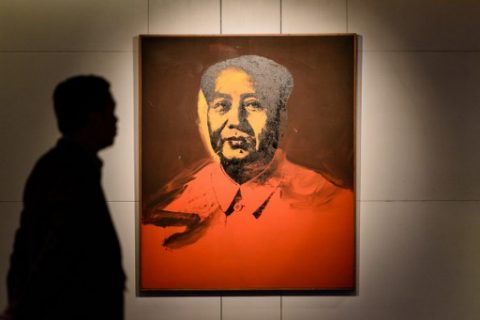
HONG KONG, China (AFP) — A classic Andy Warhol portrait of former Chinese leader Mao Zedong fetched US$12.7 million at auction in Hong Kong on Sunday, Sotheby’s said — well short of the top estimate of more than $15 million.
The sale of the 1973 screen print by the legendary United States pop artist attracted plenty of attention before going under the hammer in the semi-autonomous city owing to sensitivity about any use of Mao’s image in China.
The top sale price estimate of more than $15 million was the highest the auction house had ever seen for a painting in Asia.
The identity of the buyer was not released.
Sotheby’s had describe the event as the first “significant” sale of Western contemporary art in Hong Kong, which was handed back to China by Britain in 1997.
But while buyers from mainland China have developed massive market clout, Warhol’s images of Mao have drawn controversy there.
A major touring retrospective of his works removed pictures of the former leader when it visited Shanghai and Beijing in 2013.
Mao’s legacy as Communist China’s founding father makes him inseparable from official propaganda extolling the party’s ruling legitimacy, and his huge portrait still overlooks vast Tiananmen Square and appears on Chinese banknotes.
Yet his mistakes, such as disastrous economic policies blamed for mass starvation and the political witch hunts of the 1966-76 “Cultural Revolution,” left a bitter aftertaste and depictions of him otherwise remain strictly controlled.







